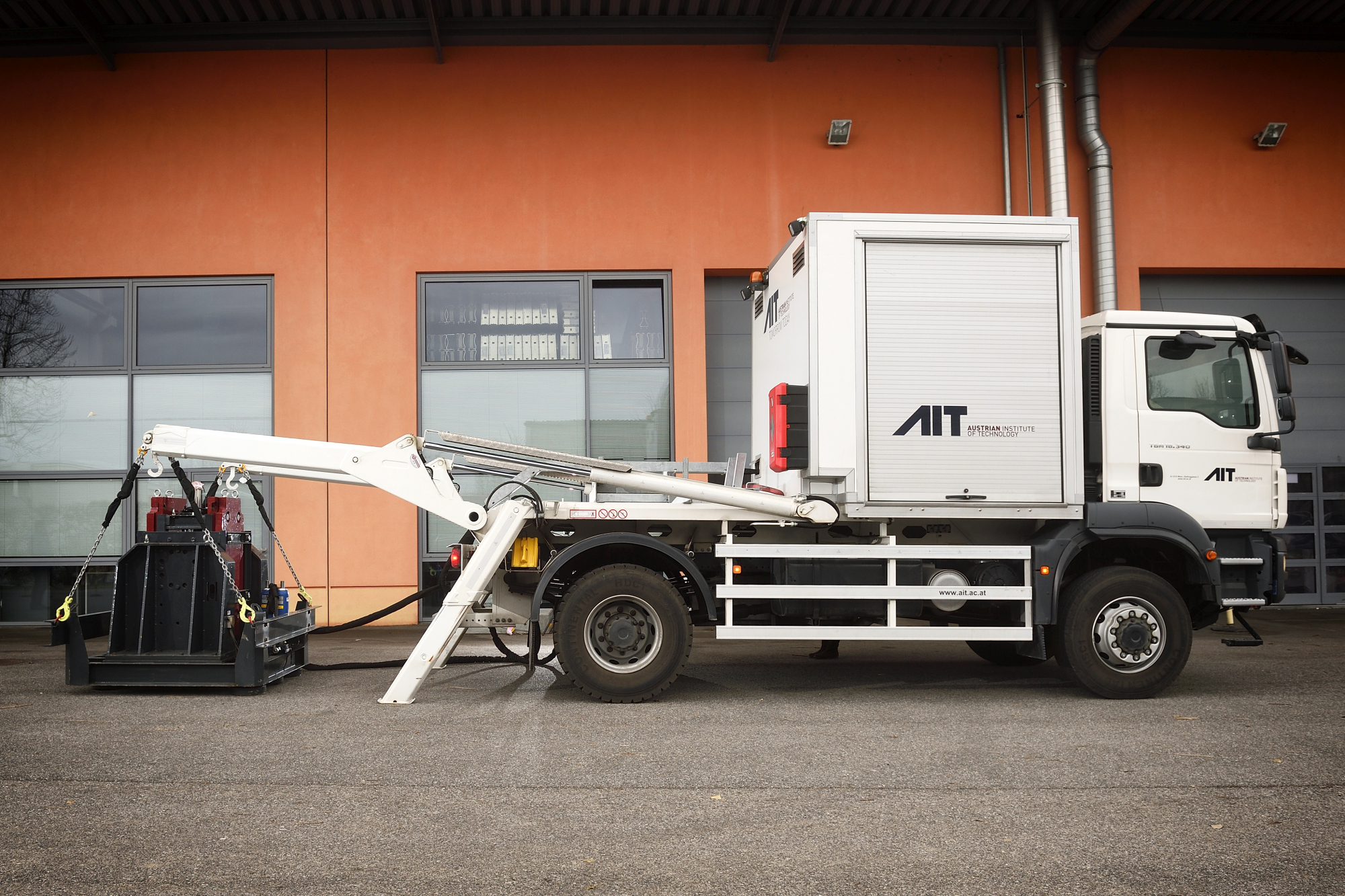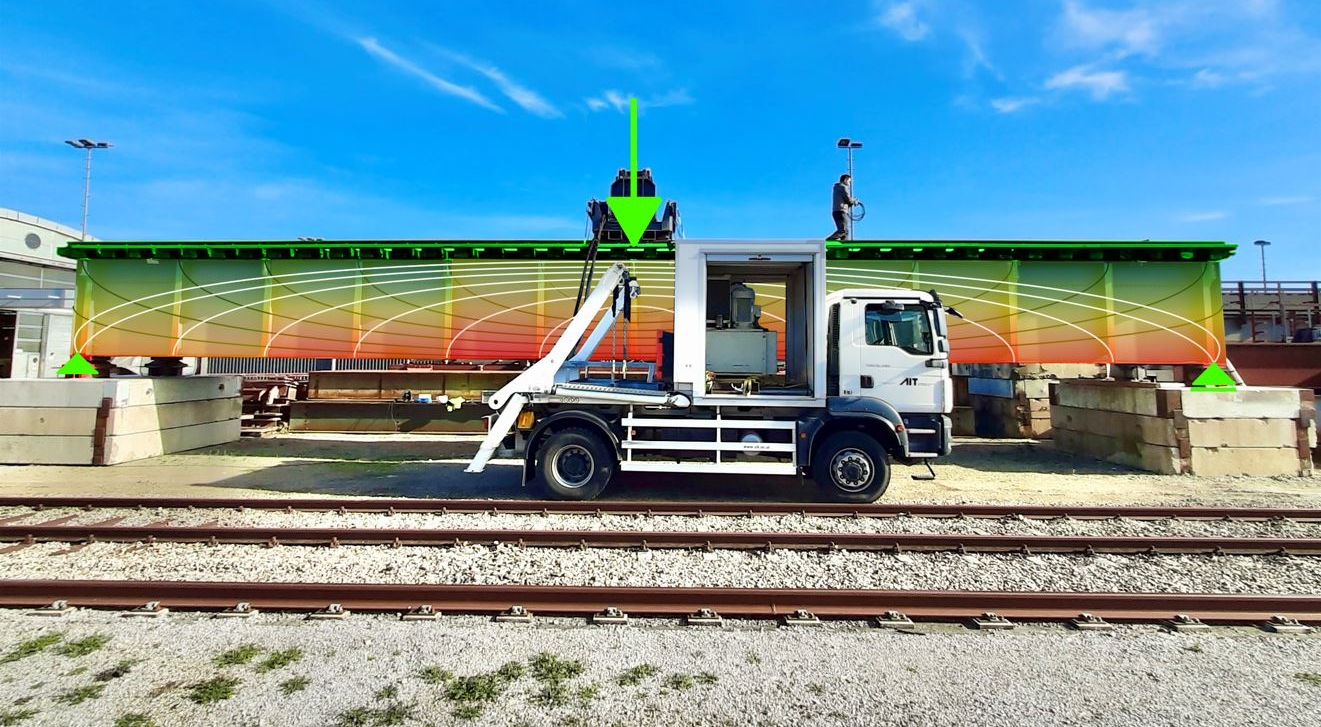Mobile Seismic Simulator (MoSeS): Hydraulic vibration exciter
The Mobile Seismic Simulator (MoSeS) is an advanced system for on-site structural vibration testing, capable of generating controlled vibrations for precise engineering assessments. It supports various excitation signals, including harmonic and transient inputs (e.g., railway-induced vibrations). A key feature of MoSeS is its ability to excite structures also in the horizontal direction, a unique capability in its class.
The system applies controlled vibration forces to the ground through three support feet, each equipped with piezoelectric sensors that measure vertical forces. Excitation is precisely regulated by a displacement transducer integrated into the hydraulic actuator. Additional sensors and measurement systems can be integrated as needed, depending on the application (e.g., accelerometers, strain gauges, fiber optic sensors, motion amplification camera). This approach enables a precise assessment of both excitation forces and structural responses.
Application Examples
- Vibration Mode & Damping Analysis – Identifying dynamic system properties
- Railway Track Planning – Simulating train-induced vibrations before construction.
- Machine Foundation Design – Assessment of specific soil-structure interaction.
- Dynamic Behaviour Testing – Optimizing protective measures, e.g. mass-spring systems and tuned mass dampers
- Fatigue Testing – Evaluating long-term performance, e.g., high-speed rail infrastructures.
- Structural Assessment – Investigations on bridges, noise barriers, and other infrastructure.
- Seismic Verification – Experimental testing of earthquake resistance in compliance with Eurocode standards.
Technical Specifications
Operating Modes
- Vertical Excitation
- Horizontal Excitation
- 45° Inclination (e.g., excitation of building facades via chain)
Excitation Types
- Fixed-frequency
- White noise
- Continuous frequency sweeps
- Variable sweep speeds
- Arbitrary transient excitation
Performance
- Maximum Excitation Force: Up to 35 kN (frequency-dependent)
- Maximum Dynamic Mass: 1,470 kg
- Frequency Range: 1–80 Hz






